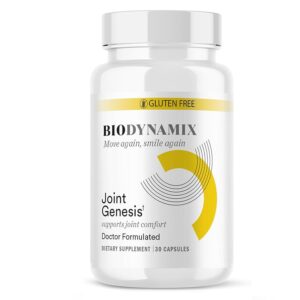Knee pain is one of the most common complaints among adults, affecting everyone from athletes to office workers to older adults. Whether caused by overuse, arthritis, or simply years of wear and tear, sore knees can make everyday activities—like climbing stairs, walking, or even standing up from a chair—feel difficult.
The good news? You don’t need expensive equipment or high-intensity workouts to start feeling better. In fact, building gentle strength around your knees through simple, low-impact exercises is one of the best ways to support your joints and reduce pain.
This 4-week beginner plan will guide you step by step. Each week adds a little progression so your knees grow stronger without unnecessary strain. By the end of the month, you’ll notice more stability, less stiffness, and greater confidence in your movement.
Why Gentle Strength Training Helps Knees
Many people think knee pain means they should avoid exercise, but the opposite is true. Movement—done correctly—improves circulation, strengthens supporting muscles, and reduces joint stress.
Here’s how gentle strength training helps:
- Supports the joint: Stronger quadriceps, hamstrings, and glutes absorb impact instead of your knees taking the full load.
- Improves alignment: Balanced muscles prevent your knees from collapsing inward (valgus) or bowing outward.
- Increases stability: Strengthening stabilizers reduces the risk of falls and injuries.
- Boosts flexibility: Controlled exercises stretch tight tissues that restrict movement.
The key is choosing exercises that are safe, low-impact, and gradually progressive—which is exactly what this plan delivers.
The Structure of the Plan
- Duration: 4 weeks
- Frequency: 3 sessions per week (non-consecutive days)
- Time: About 15–20 minutes per session
- Equipment: A sturdy chair and a resistance band (optional)
Each week includes 5 core exercises plus optional mobility moves. You’ll repeat them in a simple circuit, resting 30–60 seconds between exercises.
Week 1: Foundation and Activation
Goal: Wake up the muscles that support your knees and improve circulation.
Exercises:
- Seated Leg Extensions (10 reps each side)
- Sit tall in a chair, extend one leg until straight, hold for 2 seconds, then lower.
- Strengthens quadriceps without stressing the joint.
- Heel Slides (10 reps each side)
- Lie on your back, bend one knee, and slide your heel toward your glutes, then extend.
- Promotes gentle mobility and flexibility.
- Mini Glute Bridges (8–10 reps)
- Lie on your back with knees bent, feet flat. Lift hips a few inches off the floor, then lower.
- Strengthens glutes, reducing pressure on knees.
- Calf Raises (Chair-Assisted) (10–12 reps)
- Hold onto a chair, rise onto your toes, pause, then lower slowly.
- Builds ankle stability and reduces strain on knees.
- Seated Marching (30–45 seconds)
- Sit tall, lift one knee at a time like a slow march.
- Improves hip flexor and quad activation.
Repeat the circuit 1–2 times.
Week 2: Building Control
Goal: Add gentle resistance and improve balance.
Exercises:
- Sit-to-Stand (Chair Squats) (8–10 reps)
- Sit on a chair, cross arms over chest, and slowly stand up, then sit down.
- Builds functional strength in quads and glutes.
- Side-Lying Leg Lifts (8–10 reps each side)
- Lie on your side, lift top leg slowly, lower with control.
- Strengthens hip abductors, reducing inward knee collapse.
- Standing Hamstring Curls (10 reps each side)
- Stand behind a chair, bend one knee to bring heel toward glutes, lower slowly.
- Strengthens hamstrings for knee stability.
- Toe Taps (Seated or Standing) (30 seconds)
- Tap toes up and down to activate shin muscles.
- Improves ankle mobility and reduces stiffness.
- Mini Step-Throughs (30 seconds per leg)
- Place one foot slightly in front, shift weight gently forward and back.
- Builds balance and knee confidence.
Repeat the circuit 2 times.
Week 3: Adding Endurance
Goal: Increase repetitions and hold times to improve stamina.
Exercises:
- Wall Sits (Partial) (15–20 seconds hold)
- Lean against a wall with knees slightly bent (not past 90°).
- Builds quad endurance without pressure.
- Step-Ups (Low Step or Stair) (8 reps each side)
- Step onto a low platform, press through heel, step down.
- Functional movement for daily life.
- Standing Hip Extensions (10 reps each side)
- Hold chair, extend leg straight back, squeeze glutes, return.
- Strengthens glutes and reduces knee load.
- Heel Raises with Hold (8–10 reps)
- Rise onto toes, hold 2–3 seconds, lower slowly.
- Improves ankle stability and circulation.
- Seated Knee Extensions with Band (Optional) (8–10 reps each side)
- Place band around ankles, extend one leg forward, resist on the way back.
- Strengthens quads with added challenge.
Repeat the circuit 2–3 times.
Week 4: Gentle Progression
Goal: Solidify strength and prepare for more independence in movement.
Exercises:
- Sit-to-Stand with Pause (10 reps)
- Pause halfway on the way down for extra control.
- Side Steps with Band (Optional) (8–10 steps each way)
- Place resistance band around thighs, step side to side.
- Builds lateral hip strength.
- Single-Leg Balance (Chair-Assisted) (15–20 seconds each side)
- Hold chair, lift one foot slightly off ground, maintain balance.
- Improves stability and reduces fall risk.
- Bridges with Squeeze (10 reps)
- Place pillow between knees, squeeze as you lift hips.
- Engages inner thighs and glutes.
- Calf Stretch with Wall (20 seconds per side)
- Step one foot back, press heel into floor.
- Stretches calves and reduces tightness.
Repeat the circuit 2–3 times.
Tips for Success
- Move slowly and with control—avoid jerky movements.
- Listen to your body—some mild muscle fatigue is normal, but sharp pain means stop.
- Stay consistent—3 sessions per week can make a noticeable difference in just 4 weeks.
- Pair with daily walking—gentle walking helps reinforce strength and mobility gains.
- Track your progress—note improvements in comfort, stamina, and confidence.
Who Should Try This Plan?
This beginner-friendly routine is great for:
- Adults with mild to moderate knee pain
- Older adults who want safer exercises for joint health
- People recovering from long periods of inactivity
- Anyone looking to strengthen knees without high-impact workouts
If you have severe arthritis, recent surgery, or significant pain, consult a healthcare professional before beginning.
Long-Term Benefits
By sticking with this gentle strength plan, you can expect:
- Less stiffness and discomfort in knees
- Improved stability during daily activities
- Stronger supporting muscles (quads, hamstrings, glutes, calves)
- Better balance and reduced risk of falls
- Confidence to progress into more advanced exercise routines
Final Thoughts
Healthy knees aren’t just about avoiding pain—they’re about maintaining independence, mobility, and quality of life. With this 4-week beginner plan, you’re giving your knees the support they deserve.
Remember: it’s not about intensity, but consistency. Just 15–20 minutes, three times a week, can lay the foundation for pain-free, strong, and stable knees.
Start today with Week 1, and four weeks from now, you’ll notice how much better your knees feel—step by step, rep by rep.




